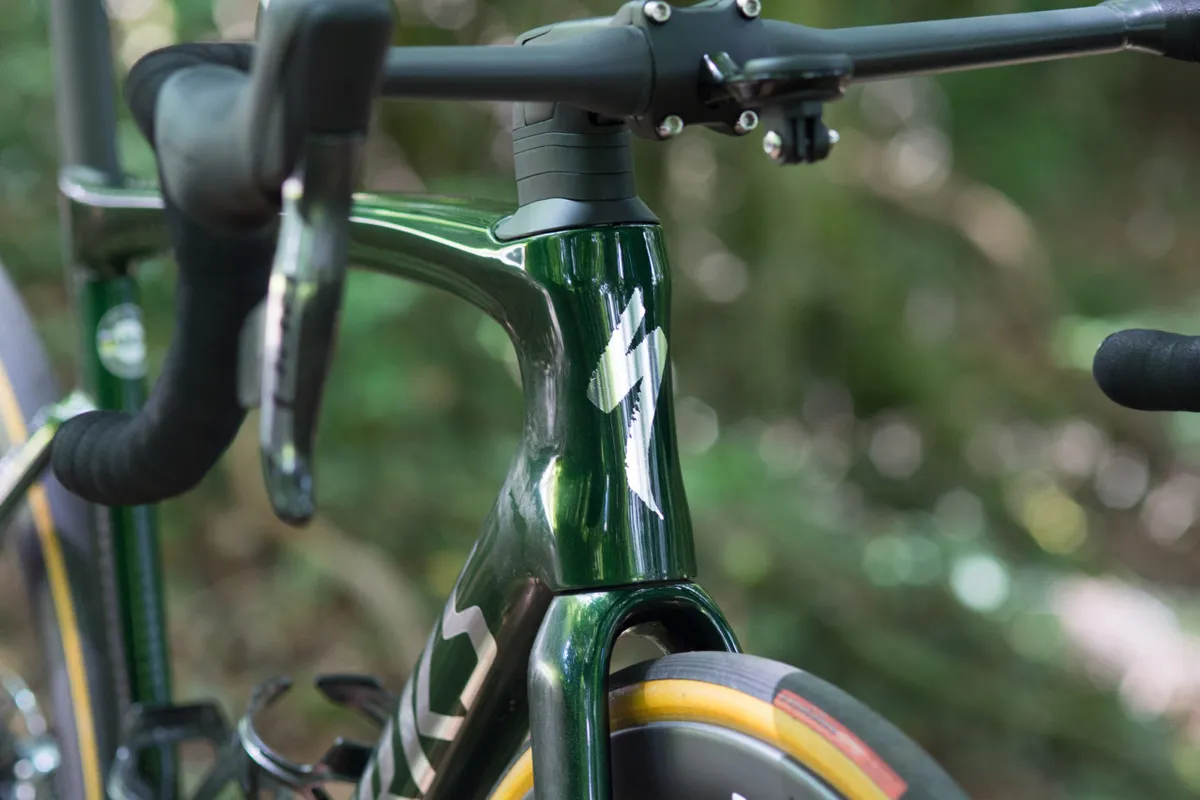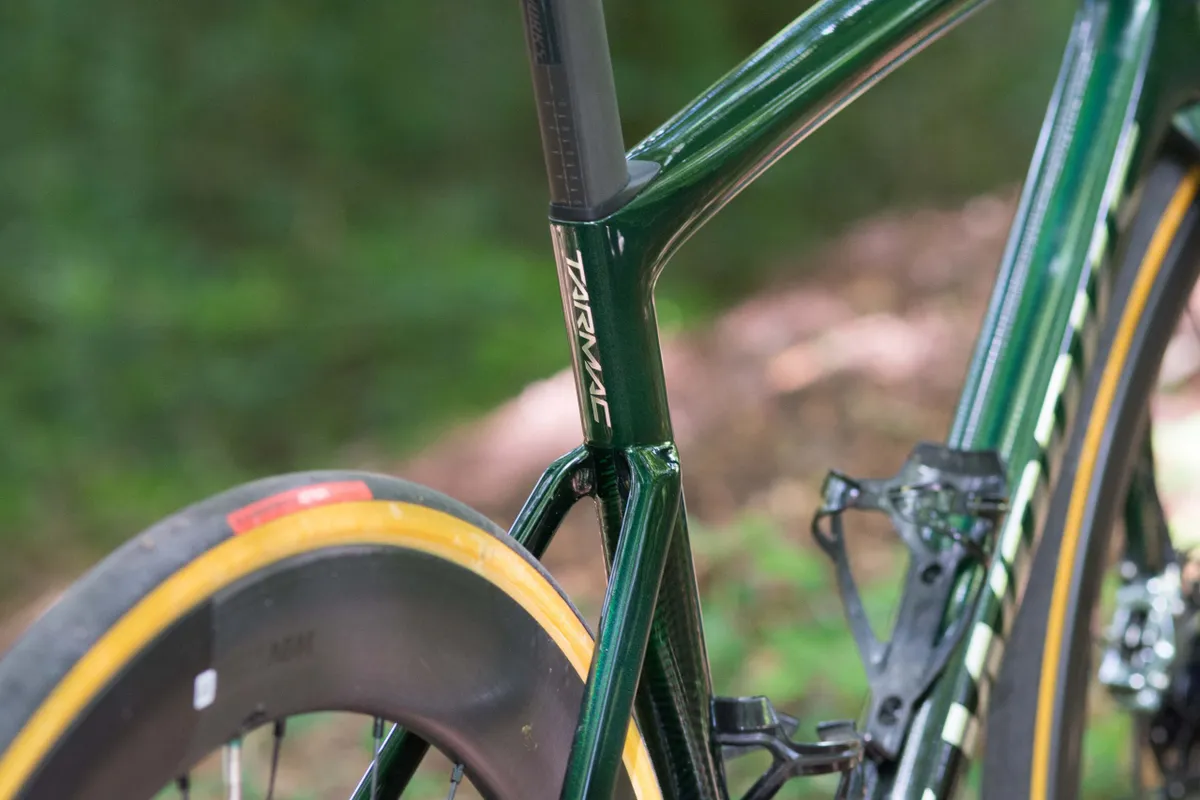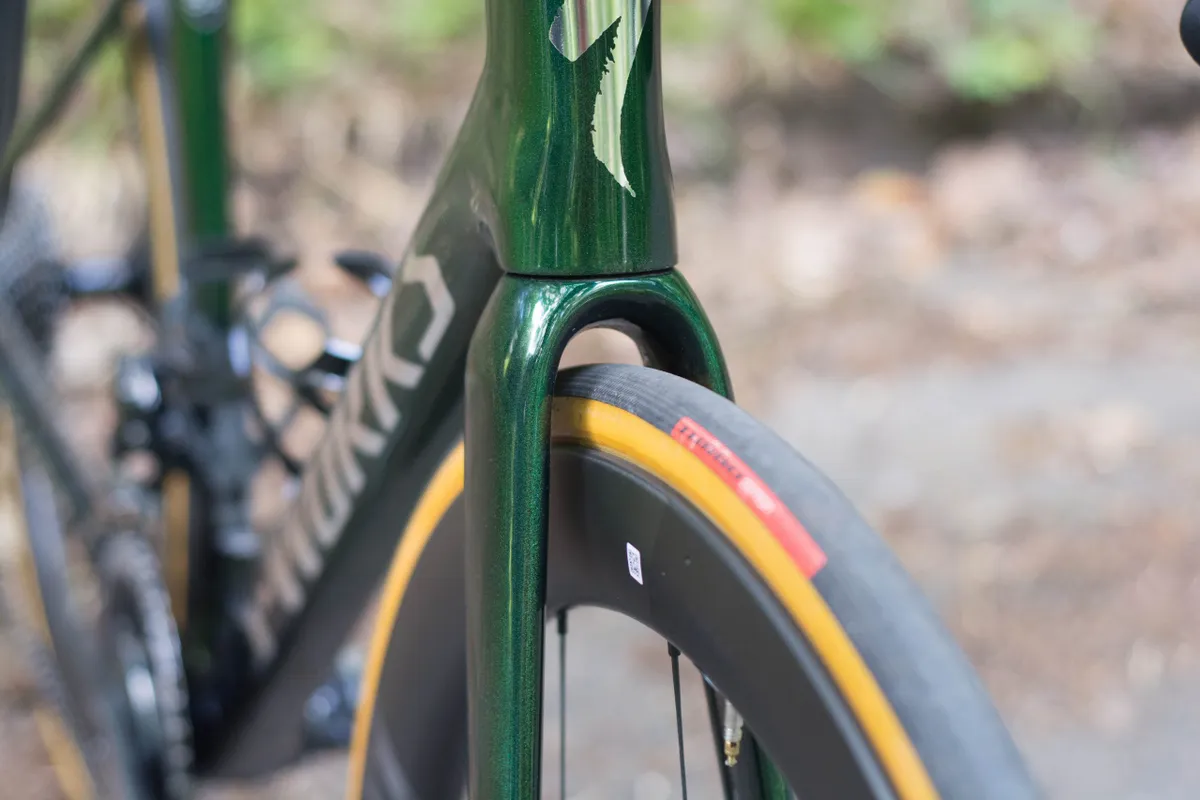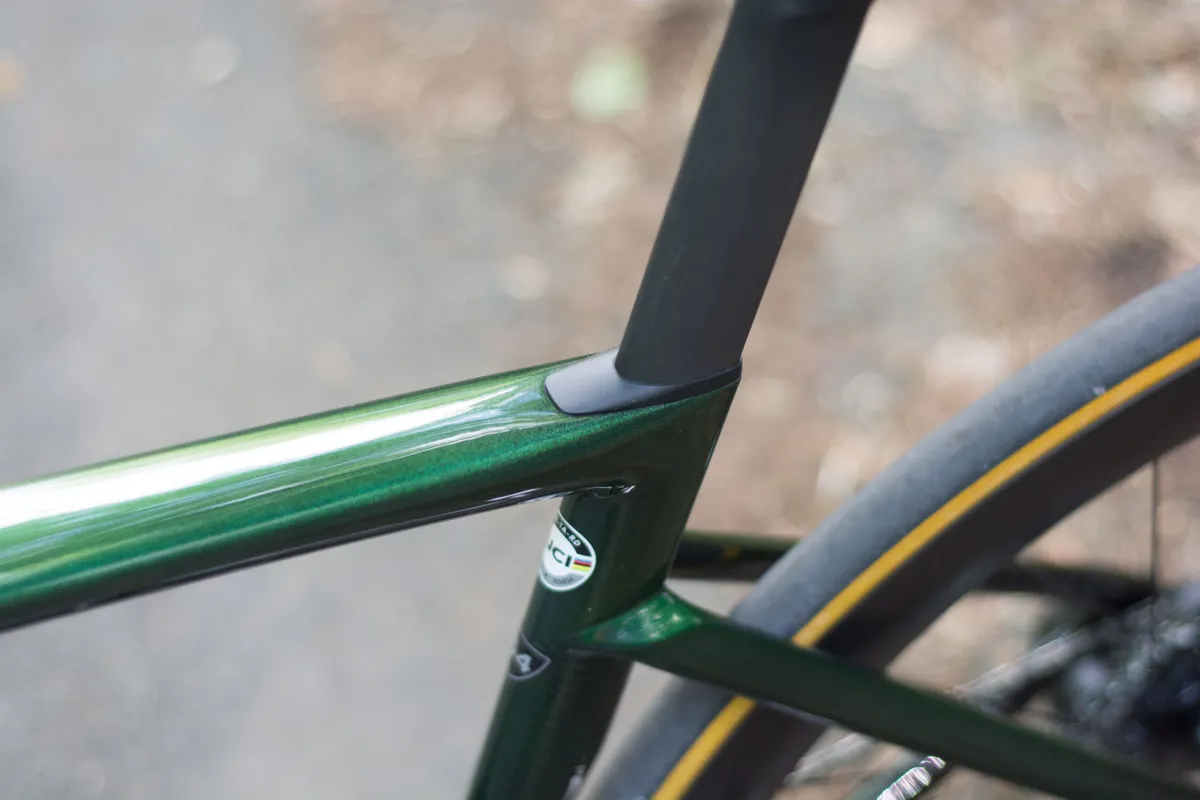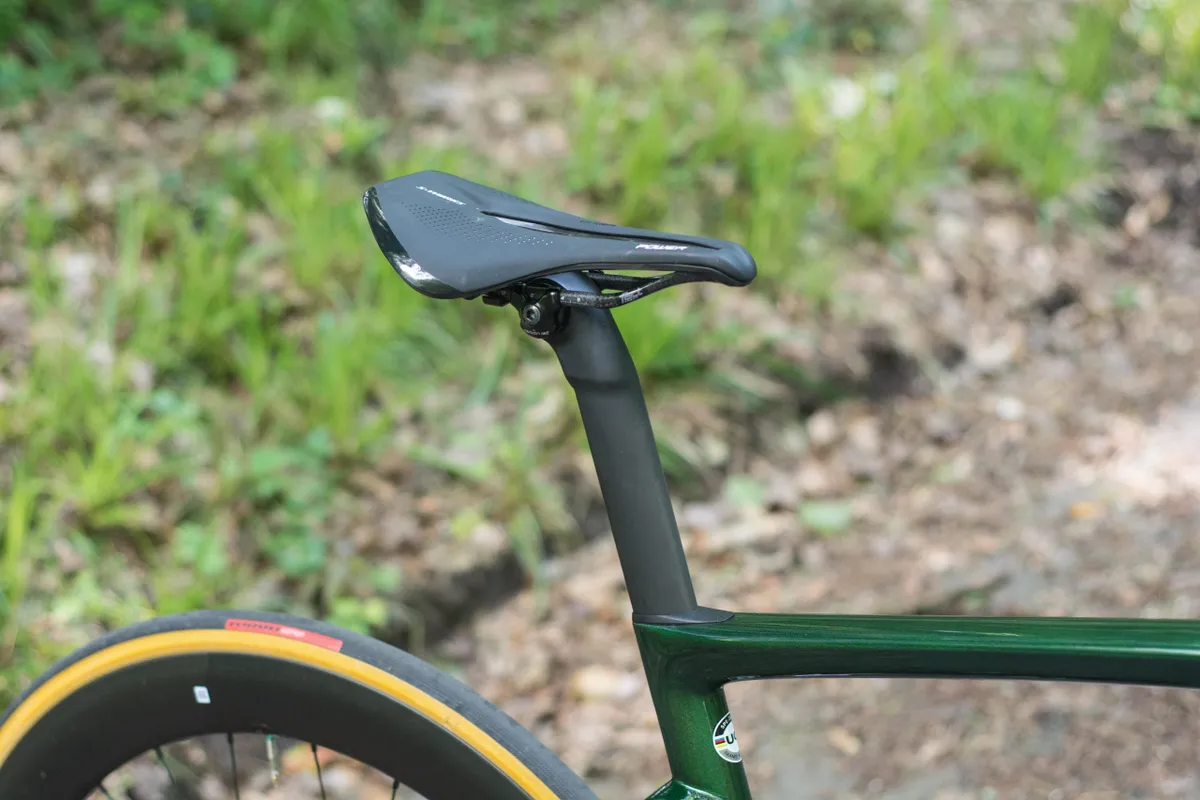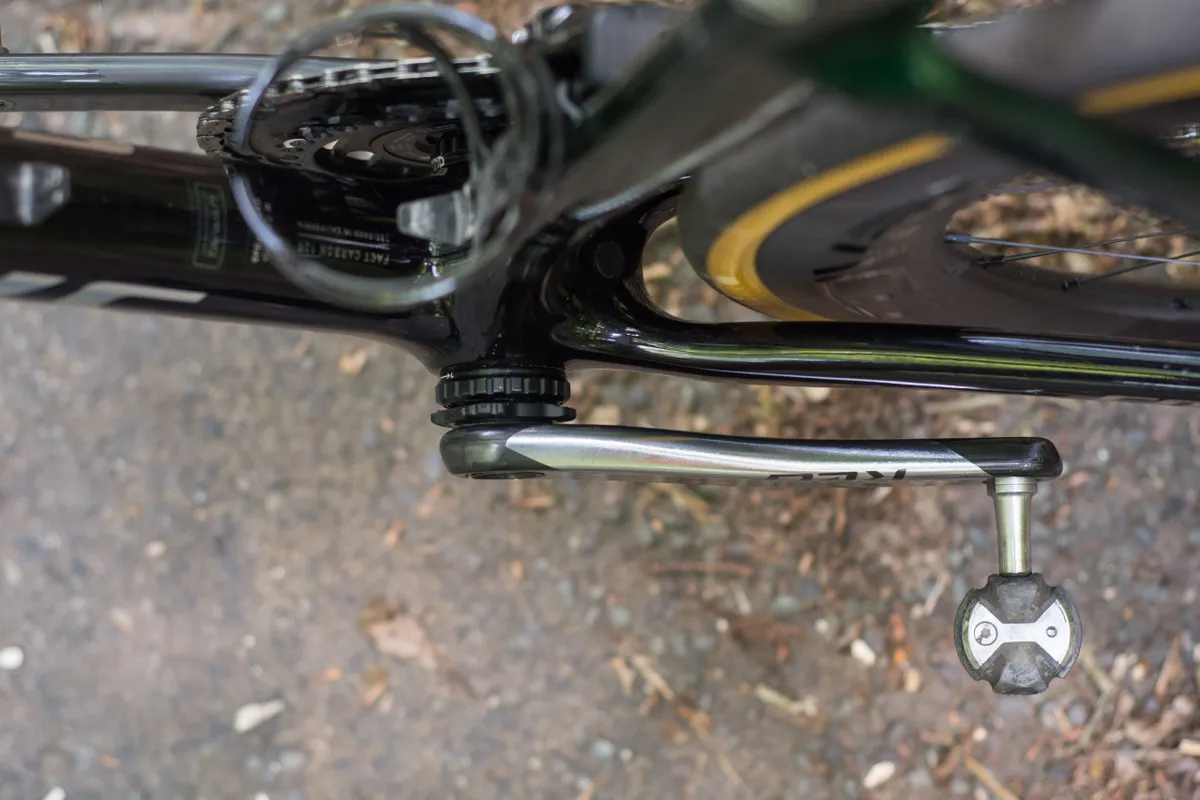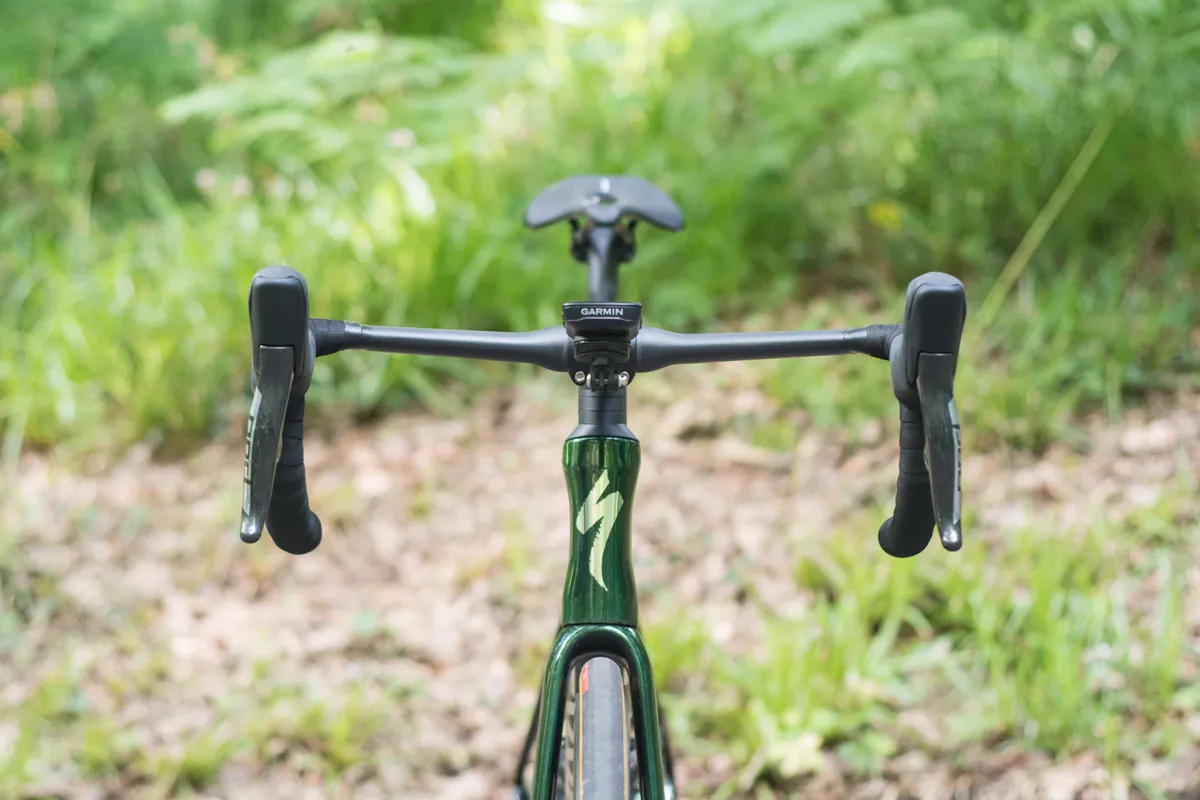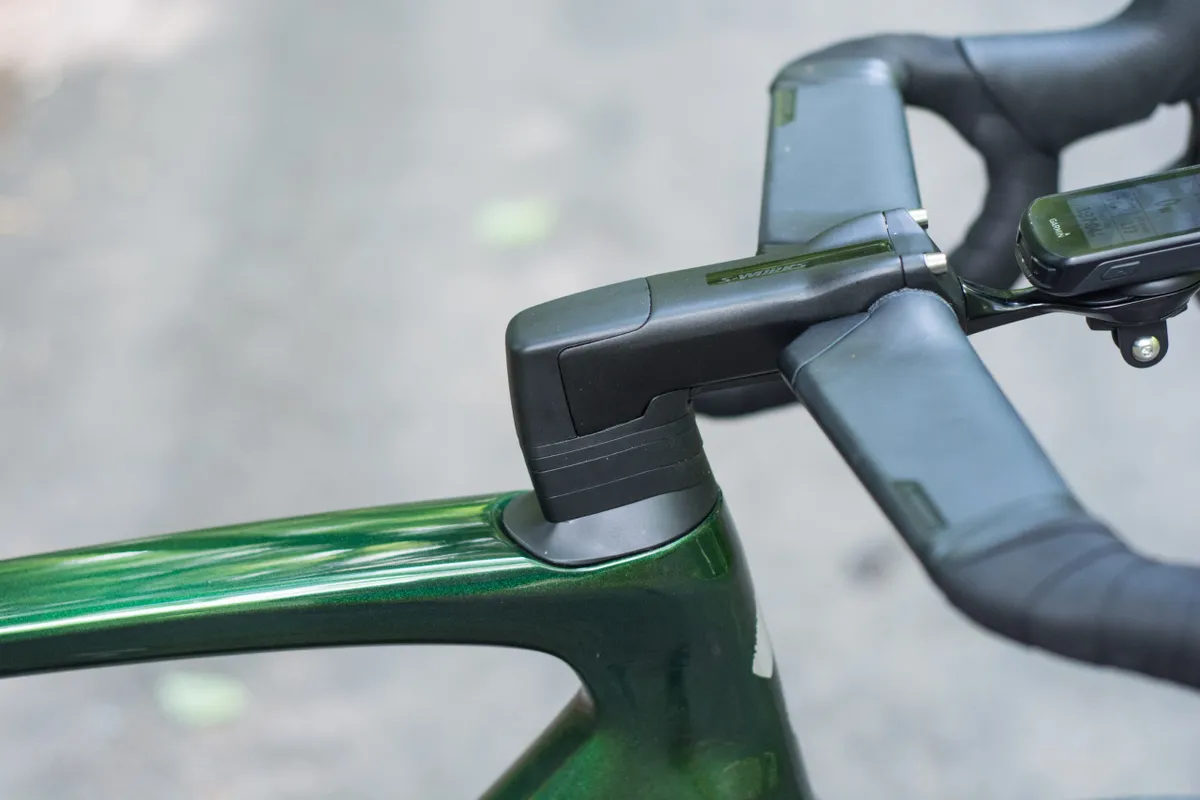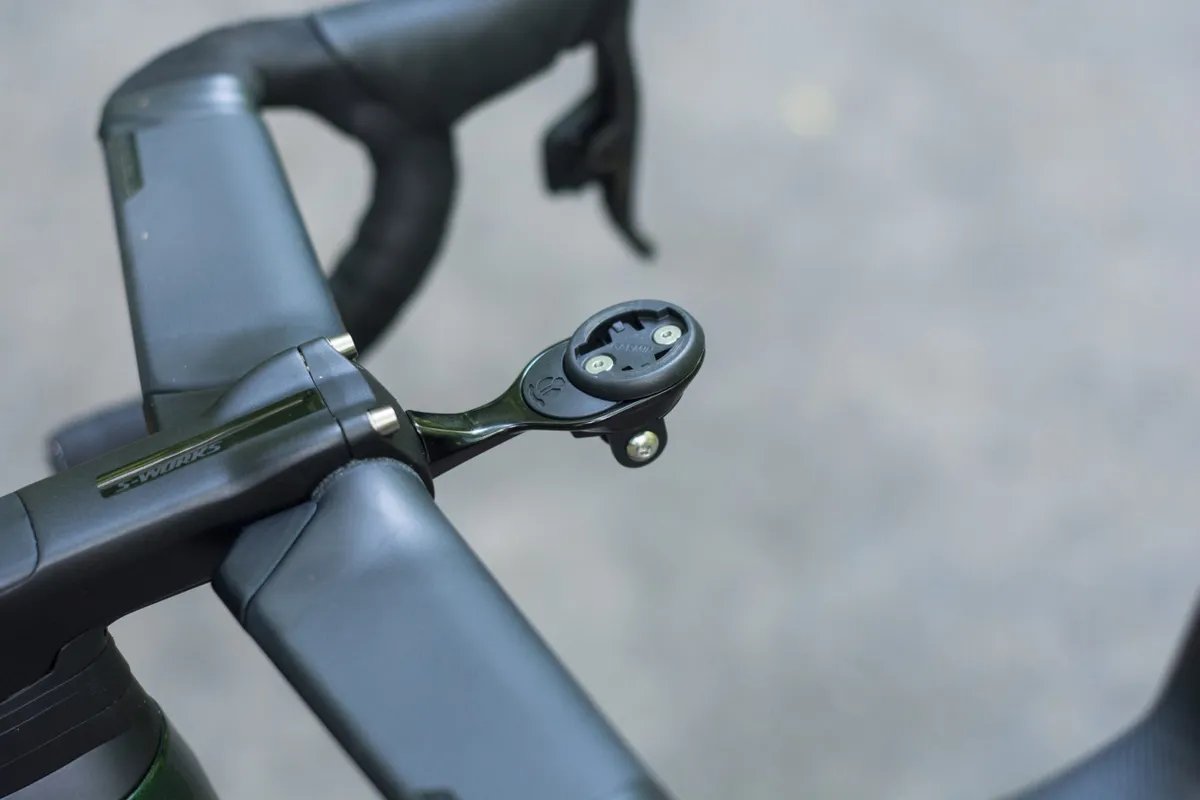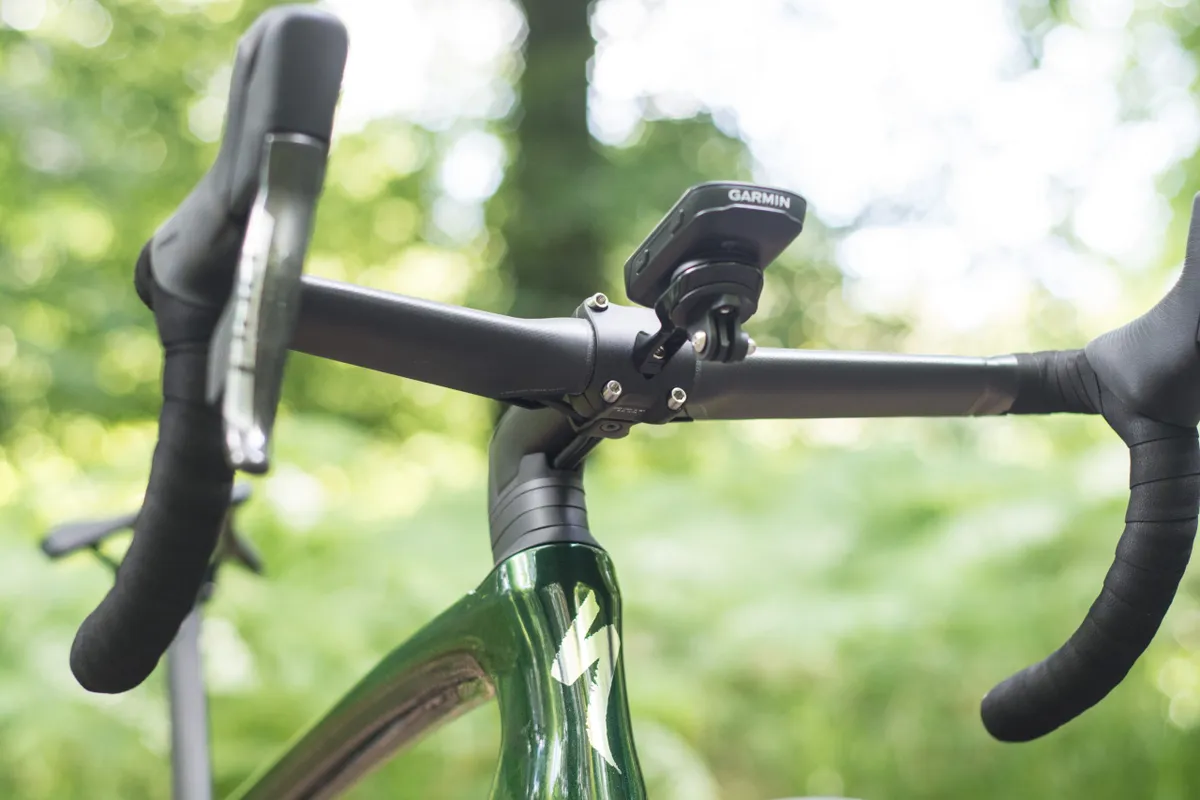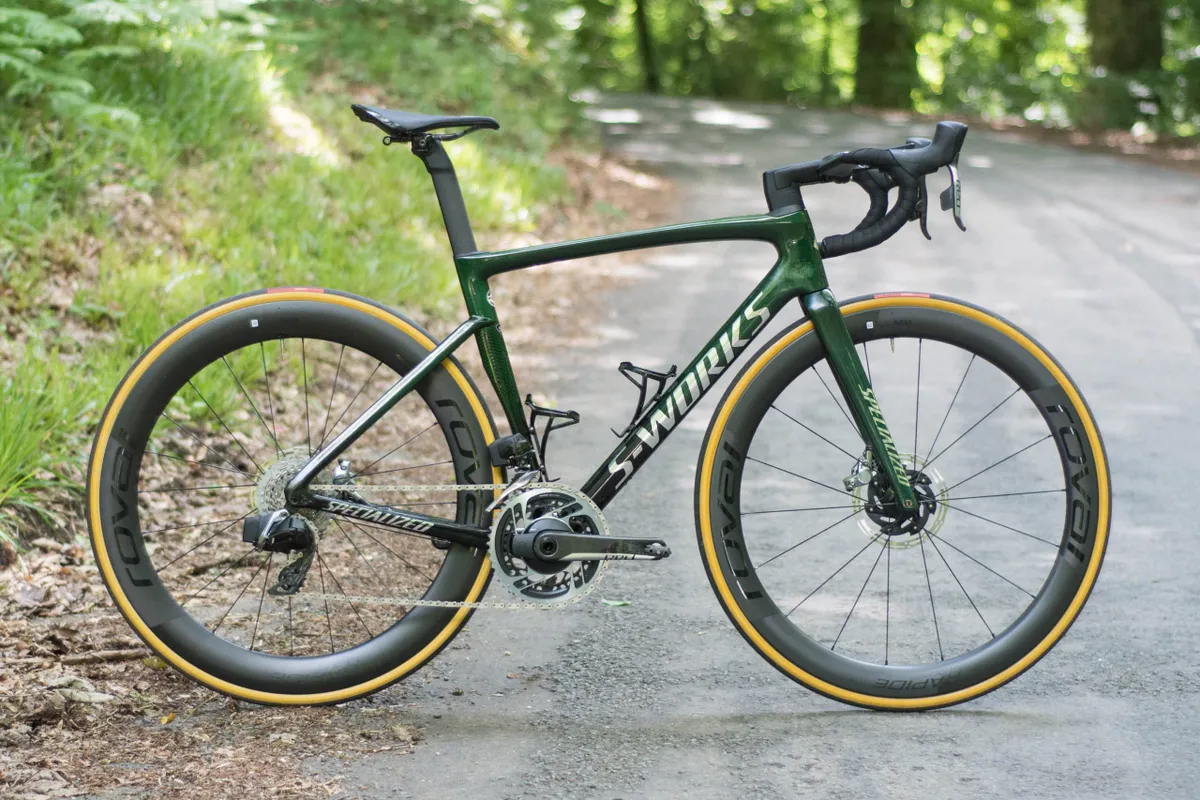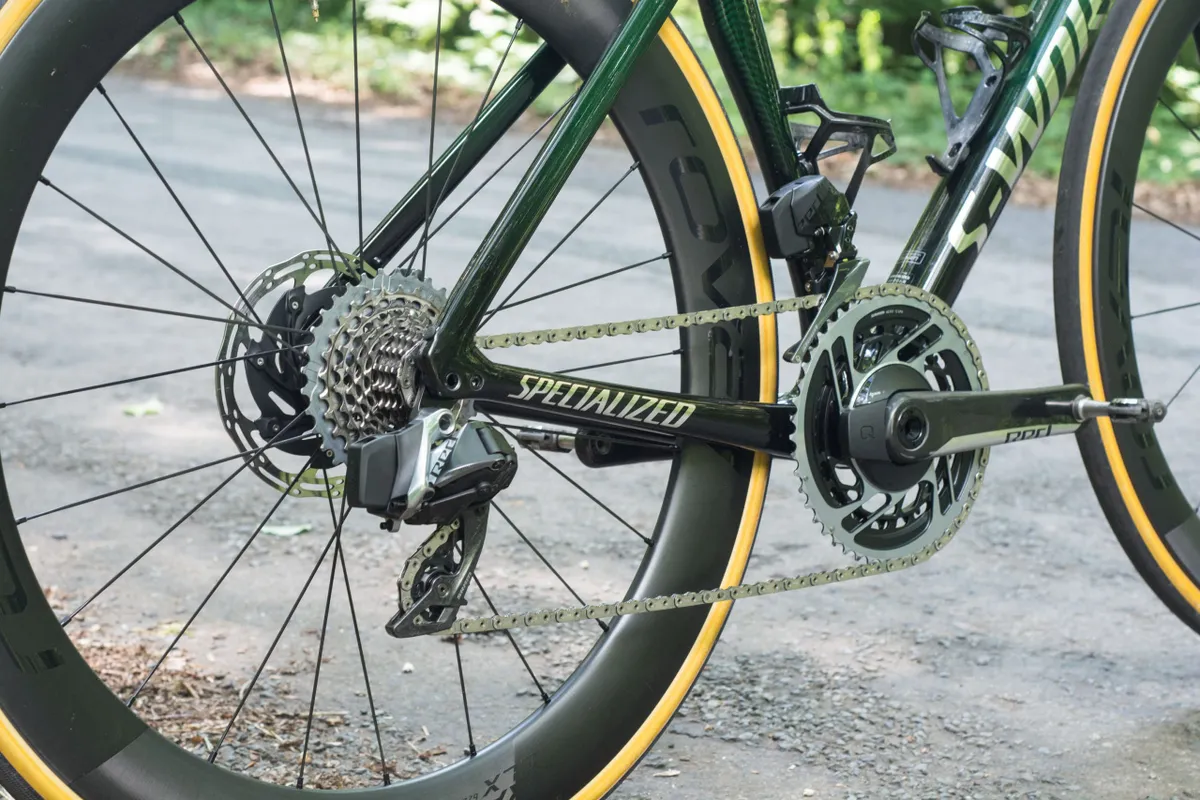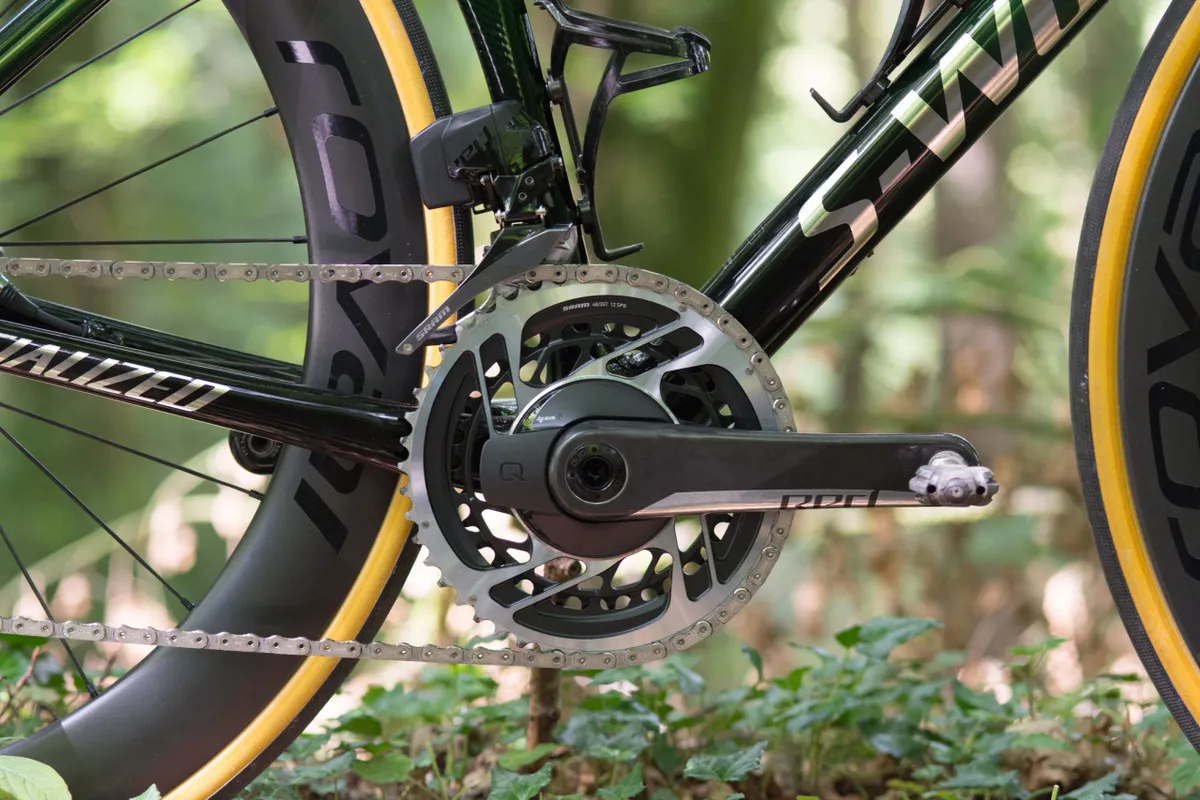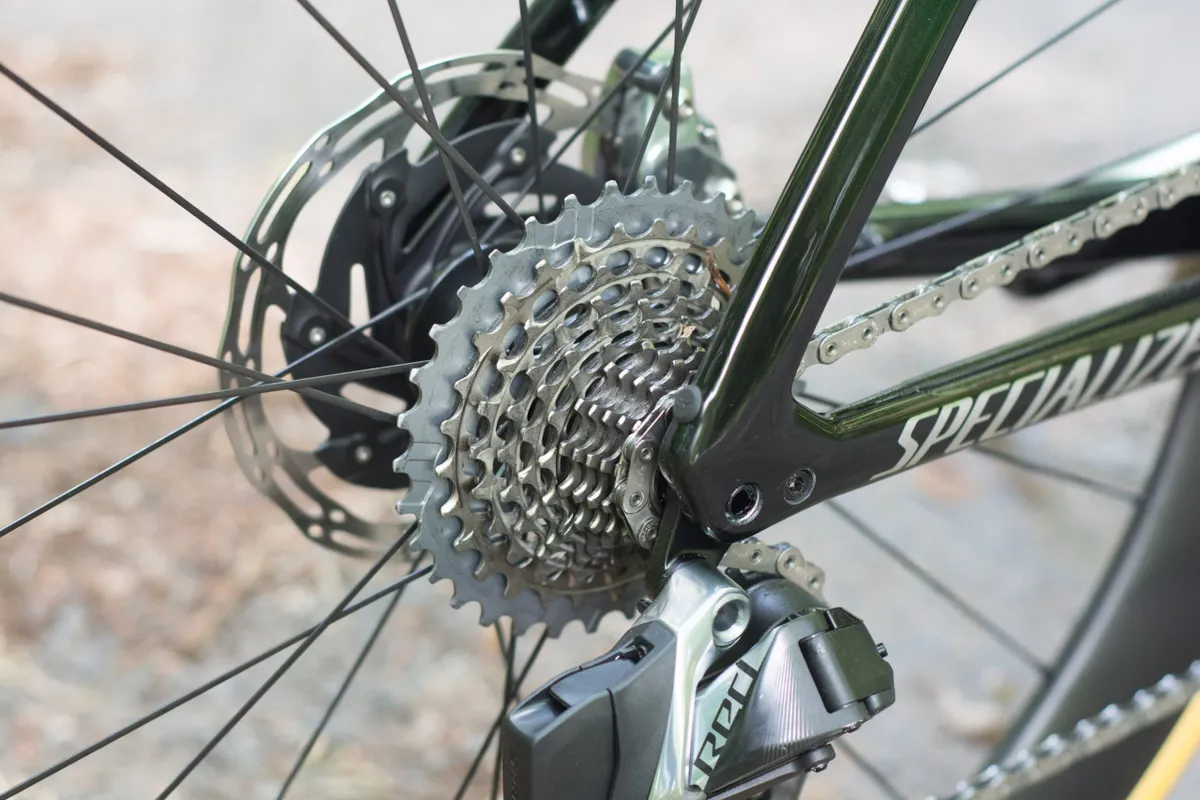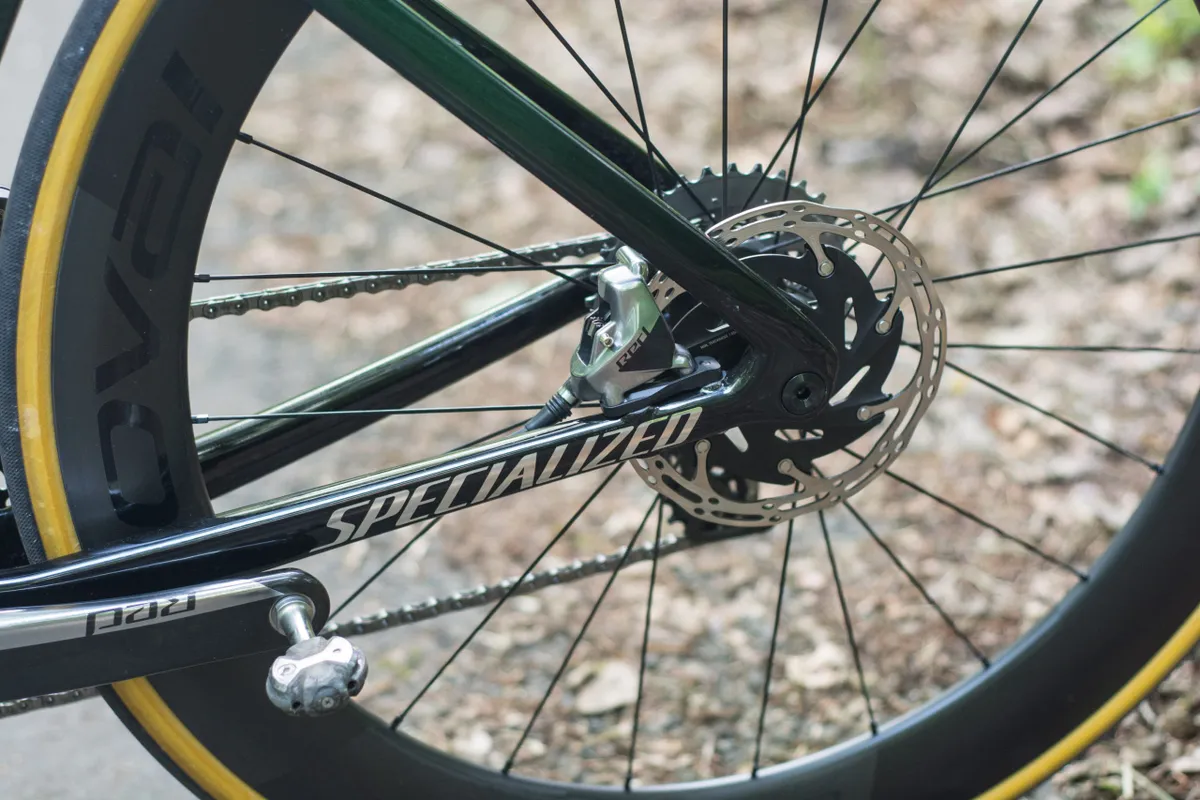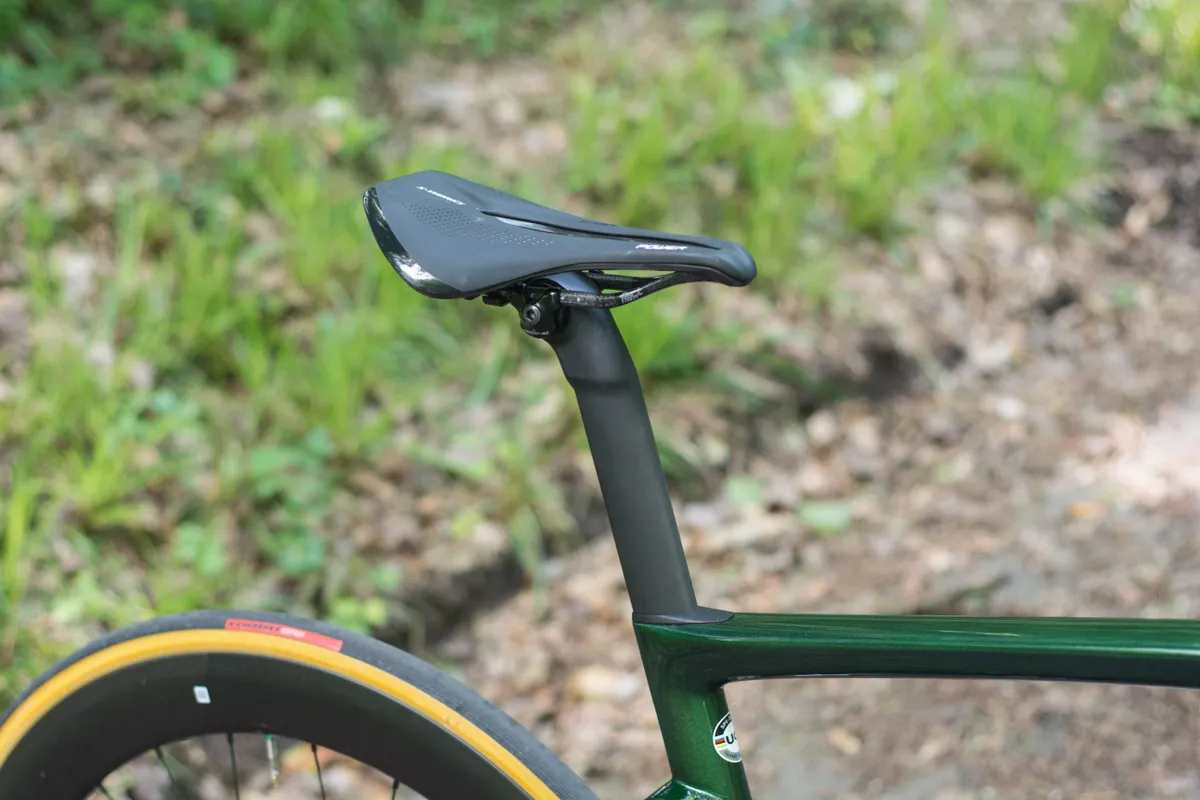The all-new Specialized Tarmac SL7 replaces both the previous SL6 model and the aero-focused Venge, incorporating features of both into a race bike that’s designed to be both aerodynamic and light.
This review focuses on the halo S-Works model with SRAM Red eTap AXS and Roval Rapide CLX wheels, which costs £10,500 / $12,000 / €11,499 / AU$18,000.
It’s a fearsomely expensive, fearsomely effective speed machine that will delight go-fast riders with its ultra-stiff frame, sublime handling and engaging ride, but may just be too race-focused for more casual roadies.
For full details on the new 2021 Tarmac SL7 range, make sure you read our news coverage from the launch of the bike.
Related reading
S-Works Tarmac SL7 frameset and cockpit
As the flagship, the S-Works Tarmac gets Specialized’s best carbon, referred to by the brand as FACT 12r.
What this actually means at the lay-up level isn’t revealed by the brand, but it’s used to build a frame that weighs a claimed 800g for a 56cm – exactly the same as the previous generation S-Works Tarmac Disc and 160g less than the outgoing S-Works Venge.
The more affordable Pro and Expert models get FACT 10r, which comes with a relatively tiny claimed weight penalty of 120g.
Carbon aside, the S-Works has identical features to the cheaper models and exactly the same geometry.
This carries over directly from the Venge and, according to Specialized, offers the same actual fit as the previous-generation Tarmac too. The numbers differ slightly due to the headset arrangement of the new bike and the way they’re measured, but the riding position is apparently unchanged.
For reference, a 54cm bike has 387mm of reach and 534mm of stack, versus 384mm and 544mm for the Tarmac SL6. A full geometry chart for all sizes is in our standalone news story.
The overall shape of the 2021 bike is similar to its predecessor, but there have been tweaks throughout to improve aerodynamics, including a move to much neater cable routing that runs underneath the stem and into the upper headset cover.
This system is designed to make everyday adjustments such as changing the bar height more straightforward, but in the event that you have to replace the upper headset bearing, the brake lines will have to be disconnected.
Specialized has opted for a Venge-style dedicated stem for the Tarmac, one that completely conceals the headset preload and steerer clamp bolts under a plastic cover.
Using an alternative cover that Specialized supplies, it’s possible to fit standard round spacers on top of the stem, so you don’t have to cut the steerer initially if you want to try out a lower position.
On the frame itself, Specialized says it primarily targeted the seat tube, seatstays and head tube for aerodynamic gains.
There are truncated aerofoil tube sections throughout, plus a pronounced hourglass profile to the head tube.
The designers have stuck with the dropped seatstays of the Tarmac SL6, a non-traditional feature that many bike makers have wholeheartedly embraced because it’s one way to increase rear-end comfort and lateral stiffness, and potentially make aero gains too.
A key change compared to the SL6 is that tyre clearances have increased, with the Tarmac SL7 officially accepting 32s (on 21mm internal rims), a size that would have been unthinkable on a race bike just a few years ago.
Specialized has also ditched the press-fit bottom bracket in favour of a standard threaded unit, a move that will be music to the ears of riders planning to maintain their own bikes, and shop mechanics the world over.
S-Works Tarmac SL7 build: no expense spared
There are two identically priced S-Works builds for 2021, one with Shimano Dura-Ace Di2 and one with SRAM Red eTap AXS, the model on test here.
This bike features the full wireless 12-speed groupset complete with a Quarq power meter crank, along with the new Roval Rapide CLX wheelset that Specialized launched in June.
We’ve covered Red eTap AXS extensively on BikeRadar but, in case you need reminding, SRAM took a new approach to gearing when it launched the groupset and the 48/35 crank option is sort of like a more commonplace 52/36 semi-compact when combined with one of SRAM’s cassettes that start with a tiny 10-tooth cog.
In fact, with a 10-33 cassette, the Tarmac is generously geared for a racer, with a proper winch bottom gear and a healthy top end that you’ll struggle to spin out.
The Roval Rapide CLX wheels look the part with seriously deep rims (51mm front / 60mm rear), and they’re distinctive for their different front and rear profiles.
While both rims measure 21mm internally, the front is fatter and blunter at a maximum width of 35mm, while the rear has a slimmer cross-section maxing out at 30.7mm wide.
The staggered design is all in aid of balancing aerodynamics and handling. The blunt profile and lower depth of the front is designed to be more controllable in side winds, while still being as fast as possible.
We know that having a rim that’s wider than the tyre is beneficial for aerodynamics, and the front takes this to extremes.
The design considerations for the rear wheel are slightly different because it’s shielded to an extent, and not a leading edge in clean air like the front wheel.
A narrower rim also reduces weight, and the claimed total for the set is just 1,400g – a very impressive figure for deep section clinchers.
There is an elephant in the room, however, and it’s tubeless compatibility, or the lack thereof.
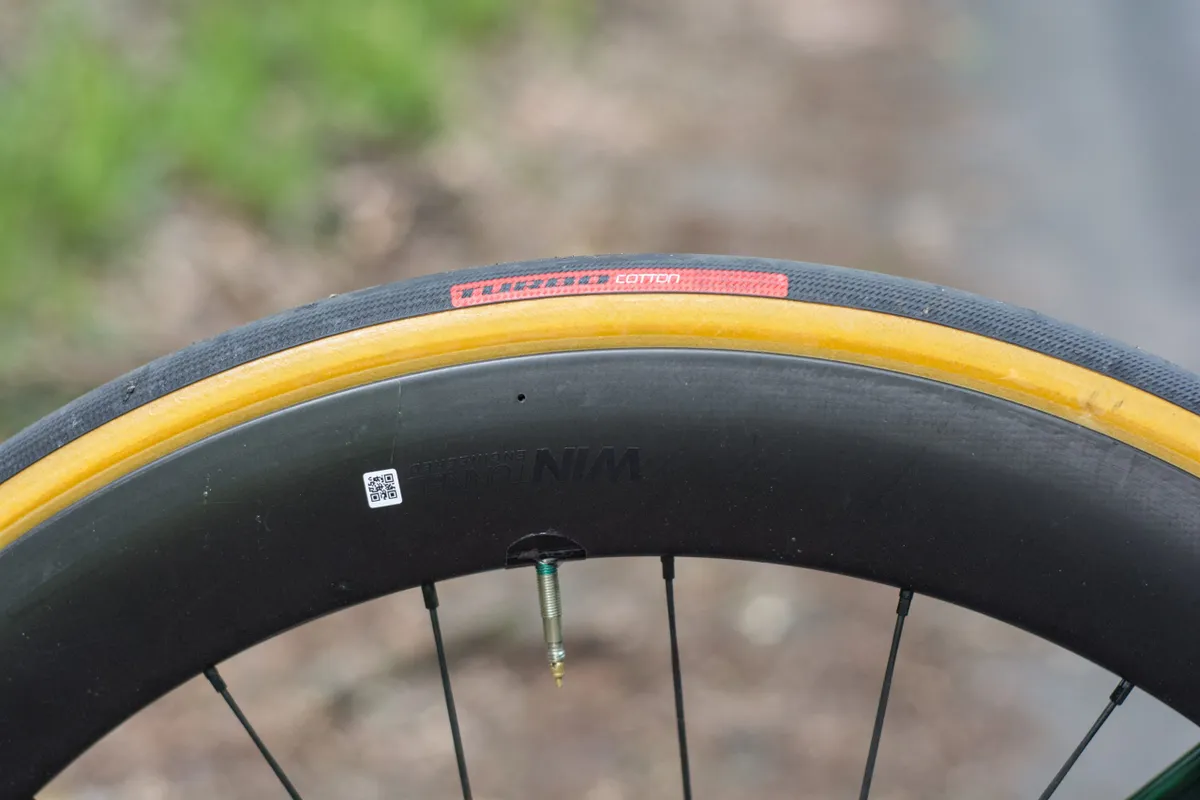
As discussed in the launch news story, the Rapide CLXs are not tubeless-compatible at all, making them a surprising choice for a brand that’s been a vocal proponent of the technology in recent times.
The Rovals are fitted as standard with 26mm Specialized Turbo Cotton clinchers with a premium 320 TPI casing.
As you’d expect, the Tarmac’s finishing kit is entirely Specialized’s own. The Aerofly II bar is a key part of the bike’s aero package, but the standard clamp diameter of the Tarmac stem means you’re not wedded to it for life.
The seatpost is tailored to the bike too, and there’s a specific mount for Di2-equipped models that houses the junction box under the saddle.
Finally, the saddle is the much-loved Power, a short-nose design that’s found huge popularity since it launched back in 2015.
This build weighs 7.0kg for a 54cm bike, a touch more than the alternative S-Works build with Shimano Dura-Ace Di2, which Specialized says comes in at 6.7kg for a 56cm.
The ride: devastatingly effective, singularly focused
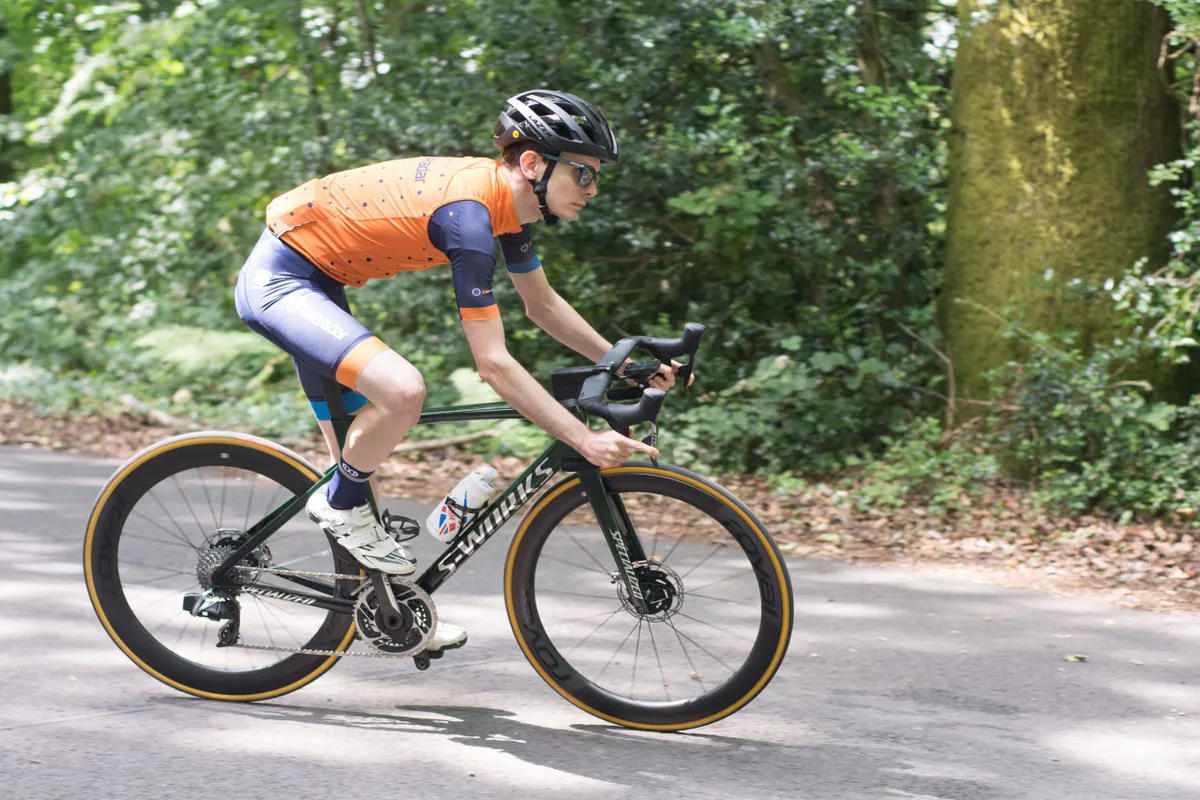
I wholeheartedly reject the idea that bikes have a personality. They’re inanimate objects without agency, and you can’t get out of them more than you put in.
Nevertheless, if the S-Works Tarmac were a person, it would be constantly, vocally egging you on, insisting you ride faster and hurt yourself more.
It’s not one single characteristic that makes the bike like this, it’s the combination of a supremely stiff frame, a clean, integrated aesthetic and a honking big set of aero wheels that whoosh delightfully when you wind them up and give you the distinct impression that you’re going really goddamned fast – whether or not you have the means to prove it with data.
Previous Tarmacs have combined astonishingly direct power transfer with a remarkable degree of poise, and the SL7 continues in that vein.
With the power of disc brakes at your fingertips and a front end seemingly devoid of flex, the riding experience is a complete delight, combining surgical precision with a feeling of total efficiency.
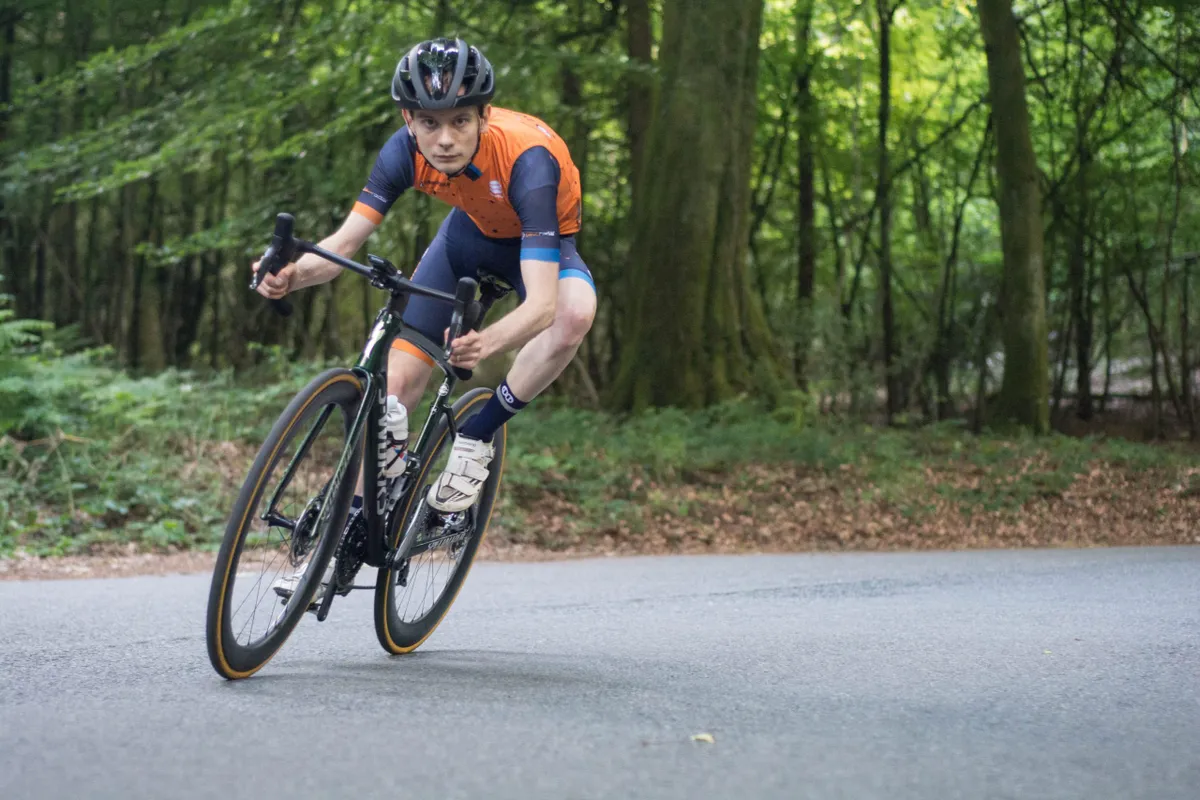
Climbing and sprinting are a joy, although I found the latter ever so slightly impeded by the hard edges of the Aerofly II bar hitting me in the forearms.
This may be down to my particular sprinting posture and where I choose to grip the drops, but the trailing edge of the wing-shaped top section extends backwards more than a round bar, and indeed I’ve managed to catch a knobbly knee on it too, when climbing exuberantly.
Aero gains or not, I’d probably favour a round bar anyway because I like to be able to wrap my fingers around the tops sometimes, which feels less natural on such a wide bar. That’s personal preference, however, and doubtless many riders will love both the looks and ergonomics.
If there’s a downside to the Tarmac’s ruthless raciness, it’s that the bike is rather uncompromising. It’s a firm, direct ride that puts you very much in touch with the road surface and doesn’t lend itself to gentle cruising so much as relentless velocity.
When you’re in the mood and feeling strong, it’s engaging, and one might be tempted to roll out a cliché about it being “rich with feedback”. On the other hand, if you’re tired and sore at the end of a long ride, you might find yourself wanting more squish.
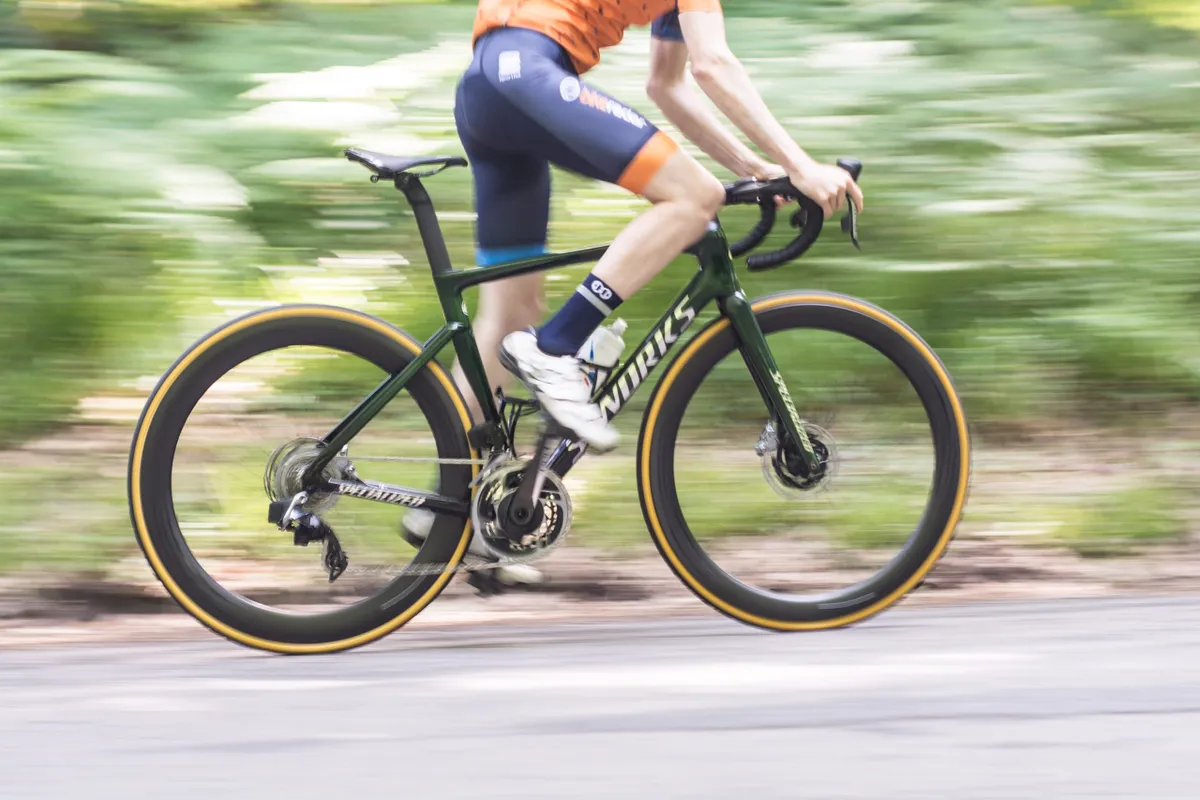
Obviously there’s scope to soften the ride by taking advantage of those ample tyre clearances, but at its core the Tarmac belongs on smoother paved surfaces as the name implies.
It’s certainly not the sort of road bike that lends itself to gravelly dalliances and on a typical crumbling lane you won’t blithely glide over potholes as you might on, say, a Specialized Roubaix.
Those Roval Rapide CLX wheels contribute significantly to the Tarmac’s overall riding experience and one’s perception of the bike.
Aside from their freehub, which sounds like a tree-full of rutting cicadas at speed thanks to its DT Swiss internals, their ample depth is hard to miss and they look stunning contrasted with tan-wall tyres.
When you’re riding, the wheels’ enormous width becomes even more noticeable.
The front rim in particular is so wide that, when you look down, the 26mm tyre is entirely hidden from view, giving the peculiar impression that you’re riding on carbon rather than rubber.
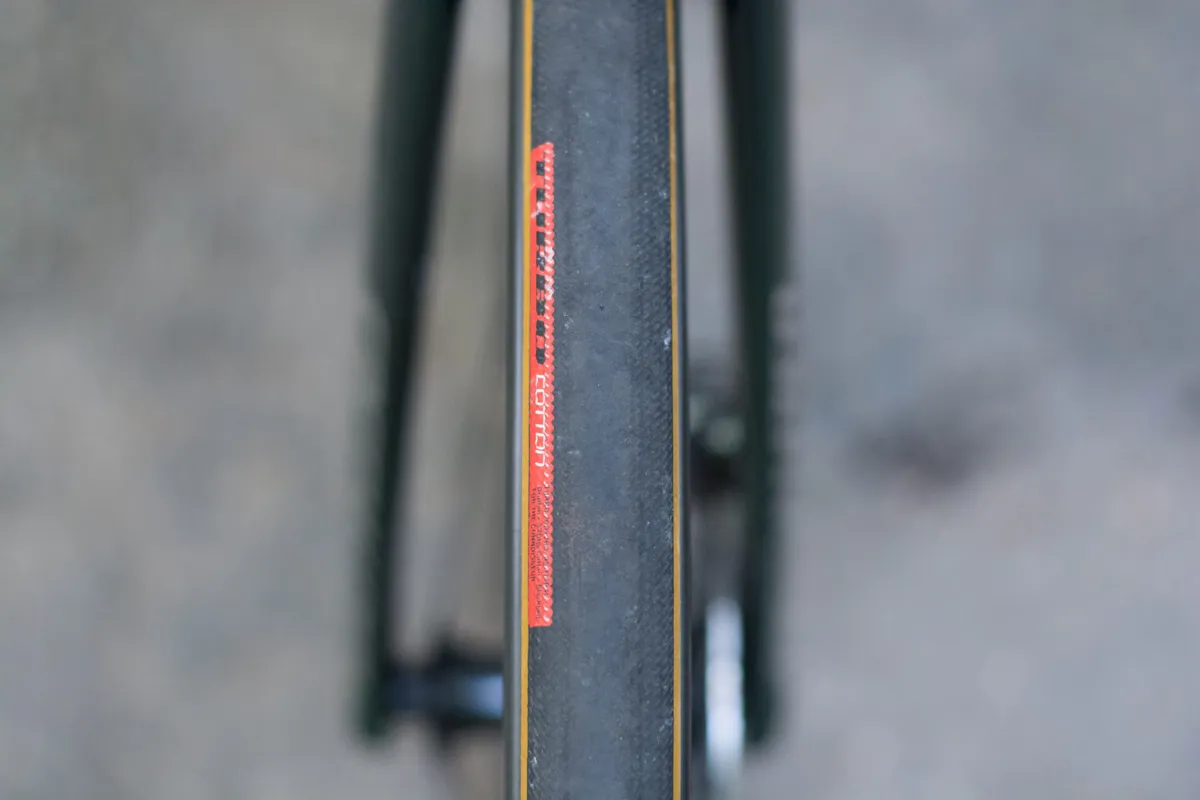
As well as extracting plenty of volume from the 26mm Turbo Cotton tyres (at 53kg, I was able to run both front and rear comfortably in the 60-something psi range), these wheels are impressively unflappable in gusty conditions.
Specialized says the Rapide CLXs are 25 per cent more stable than the older CLX50s (in terms of steering torque) and I can believe it, they really do handle amazingly well for their depth.
Granted, I’ve not ridden them in a true gale, but at my diminutive weight I’m highly sensitive to crosswinds, and the Rovals are certainly better behaved than most.
S-Works Tarmac SL7 verdict: a stunning bike, but does anyone really need the S-Works?
The S-Works Tarmac SL7 is a pretty phenomenal machine that will delight any rider and truly reward the stronger ones.
There are spec details I’d tweak (the choice of bar, the non-tubeless wheels), but the complete package is a pretty mouth-watering one, and of course for the same money you also have the option of the slightly lighter Shimano Dura-Ace Di2 build if that’s your preference.
We’ll never say no to free speed so the aero gains are of course welcome, but they’re not exactly tangible in everyday riding.
If you’re happy with your Tarmac SL6, the SL7 isn’t going to feel like a great leap forward. It’s more of a natural evolution, but aside from the obvious attraction of shiny new things, there may be specific aspects of the new frameset that appeal, such as the extra tyre clearance, super-tidy cable routing or the threaded bottom bracket.
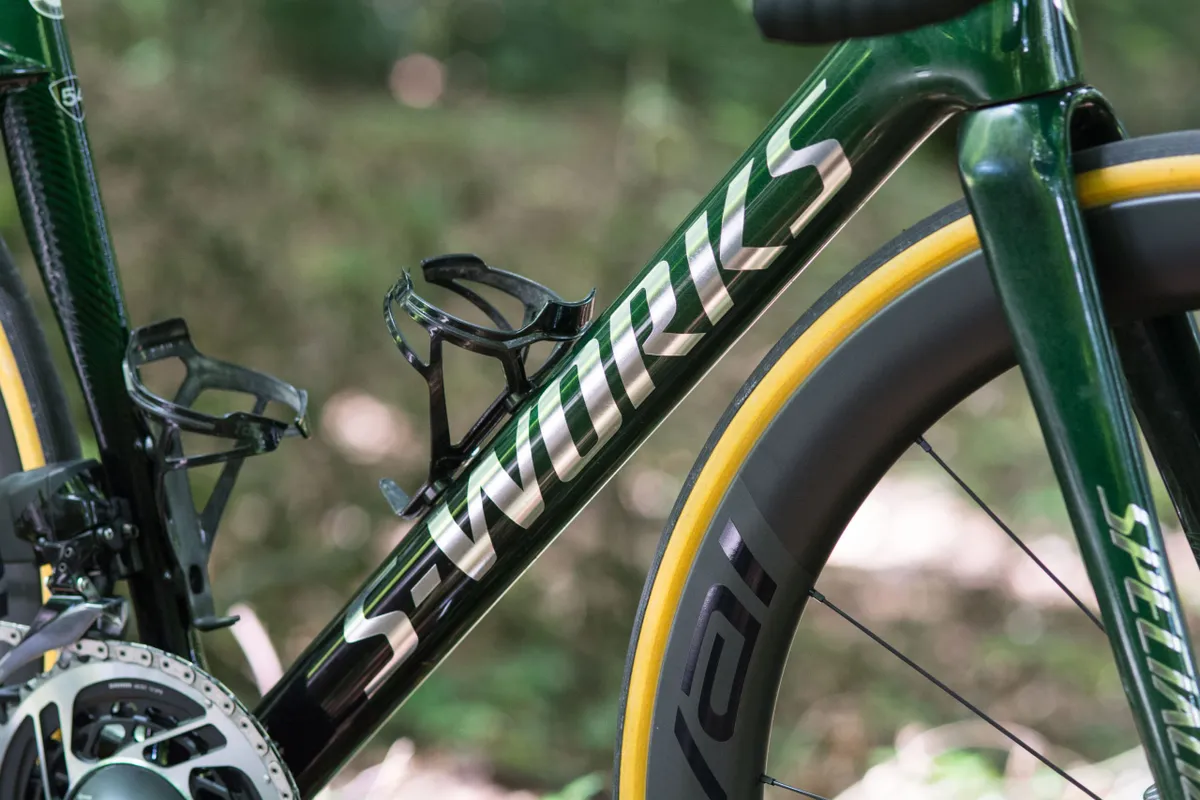
If you’re thinking of trading in your Venge, do remember that even Specialized acknowledges that while the new Tarmac is lighter, it’s also slightly less aero.
In this price range you can largely forget about any notion of value for money because you’re so far into the range of diminishing returns that it becomes moot.
We’ve yet to test a more affordable SL7, but, in the past, the second-tier Tarmacs have always been outstanding bikes, and likely the better buy for most of us.
Jumping from the cheaper models’ FACT 10r carbon to the S-Works’ FACT 12r saves you just 120g (claimed) and comes with an enormous price premium, but for riders who must have the best and need the word “S-Works” on the down tube this won’t matter.
I’ve enjoyed riding the S-Works Tarmac immensely but, on a more real-world budget, I’d look to the very bottom of the range, perhaps to the Expert model with mechanical Ultegra and Roval C 38 wheels which, although they’re heavier, are arguably more future-proof because they’re actually tubeless-ready.
Product
| Brand | specialized |
| Price | 18000.00 AUD,11499.00 EUR,10500.00 GBP,12000.00 USD |
| Weight | 7.0000, KILOGRAM (54) - |
Features
| Fork | S-Works FACT Carbon 12×100 thru-axle, flat mount |
| br_stem | Tarmac integrated stem -6 degree |
| br_chain | SRAM CN Red 12-speed |
| br_frame | S-Works Tarmac SL7 FACT 12 Carbon, 12×142mm thru-axle, flat mount disc |
| Tyres | 26mm Specialized Turbo Cotton 320tpi |
| br_brakes | SRAM Red eTap AXS hydraulic disc |
| br_cranks | SRAM Red AXS Power Meter 48/35 |
| br_saddle | Body Geometry S-Works Power, carbon rails and base |
| br_wheels | Roval Rapide CLX |
| br_shifter | SRAM Red eTap AXS |
| br_cassette | SRAM Red XG-1290 10-33 |
| br_seatpost | S-Works Tarmac FACT Carbon Di2 compatible |
| br_gripsTape | Supacaz Super Sticky Kush |
| br_handlebar | S-Works Aerofly II |
| br_bottomBracket | SRAM Dub BSA 68mm |
| br_availableSizes | 44, 49, 52, 54, 56, 58, 61 |
| br_rearDerailleur | SRAM Red eTap AXS |
| br_frontDerailleur | SRAM Red eTap AXS braze-on |
